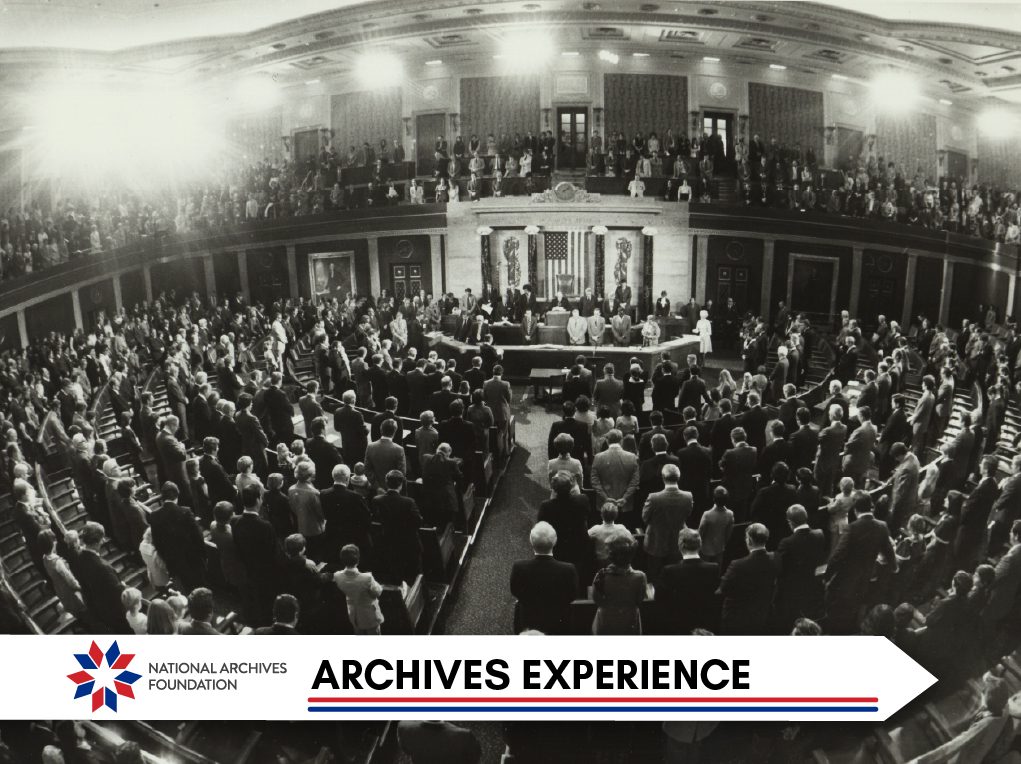Archives Experience Newsletter - April 4, 2023
By Popular Demand
One person, one vote is a tenet of our political system, so integral to our government that it might be hard to believe that it wasn’t always the case. However, it wasn’t until the early 20th century that voters had a direct say in electing their U.S. Senators.
The story of the 17th amendment is a powerful narrative of the government literally handing power back to the people. Here’s the history behind your ability to step into a voting booth and choose your Senator…
In this issue
Shielding the Senate from politics was a taller order than the Founding Fathers anticipated…
Resolution calls for the direct election of Senators; this time, the resolution had a “race rider.”…
History Snack
Calls to reform the Senate were always one of their subjects…
American Aristocrats
One of the fundamental arguments among the Founding Fathers was how a representative government would be structured. Gone were the days of absolute monarchy, but the question of how to give the people a voice while avoiding “mob rule” was paramount during the Constitutional Convention.
In the end, it was determined that one house of Congress, the House of Representatives, would be directly elected by the people, while the other, the Senate, would be chosen by state legislatures. Everyone was happy, and no one was. While framers like George Mason praised the House of Representatives for being a check on the executive and a “grand depository” of democratic principles, he decried the “aristocratic Senate.” Other founders, namely James Madison, saw the Senate as a deliberative and independent body that would be above the more divisive politics of the House.
Less known is that the Senate was also established for the purpose of maintaining states’ ties to the federal government. As the Constitution was being written, the “United” States of America were anything but. States more often acted as their own independent nations than in concert with the federal government. The idea was that keeping state legislatures and Senators in a close relationship would enhance cooperation between states and the federal government.
Under Pressure
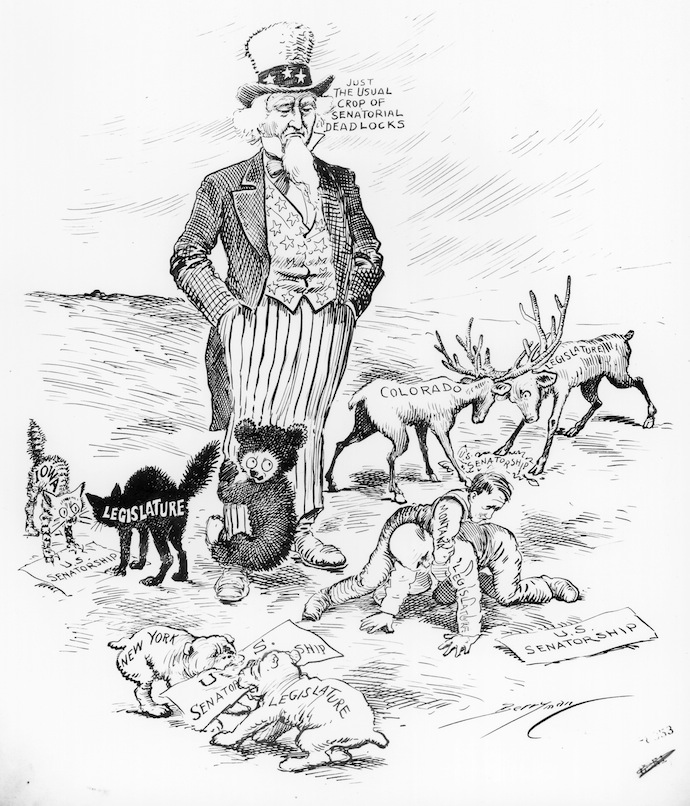
Senate Deadlocks–Clifford Berryman
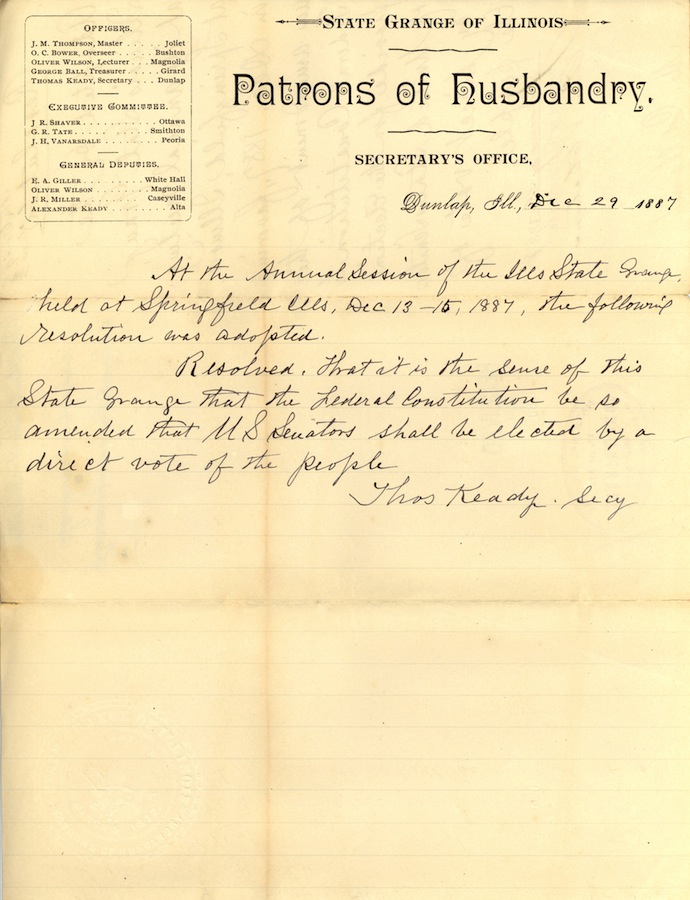
Illinois Grange petition for direct election of senators
It turns out that shielding the Senate from politics was a taller order than the Founding Fathers anticipated. The electoral relationship between state legislatures and the Senate lasted just over a century, but by the early 1900s, it was starting to come into question. The Gilded Age was rife with political corruption, and positions in both civil service and elected office became no more than bartering chips among the wealthy and entrenched politicians. Growing political tension was taking its toll on state legislatures—Senate vacancies sat empty for months, even years, while state legislatures were deadlocked in selecting a candidate.
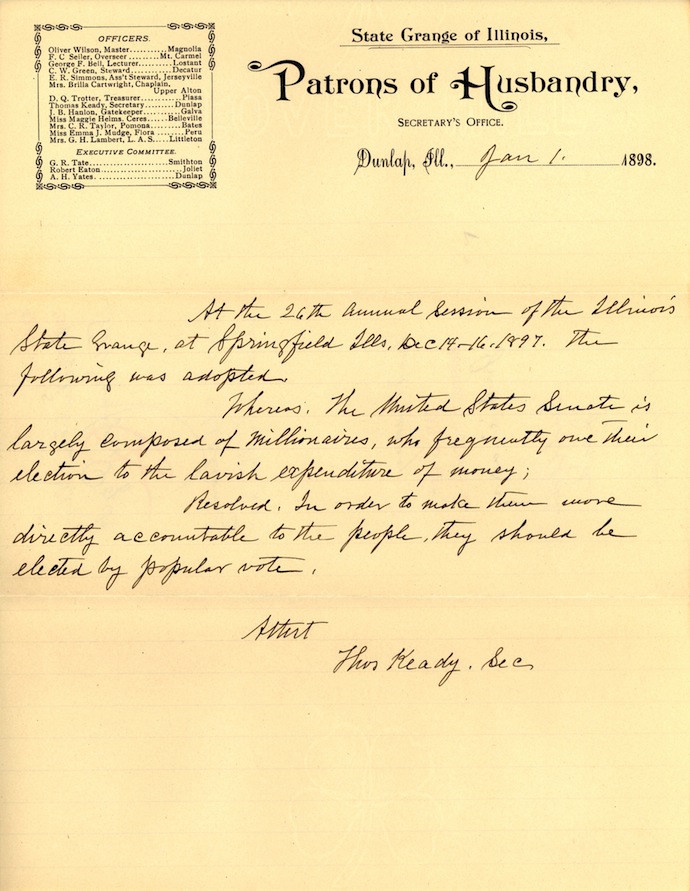
2nd Illinois Grange petition using even stronger language–refers to the Senate as a “millionaires’ club”
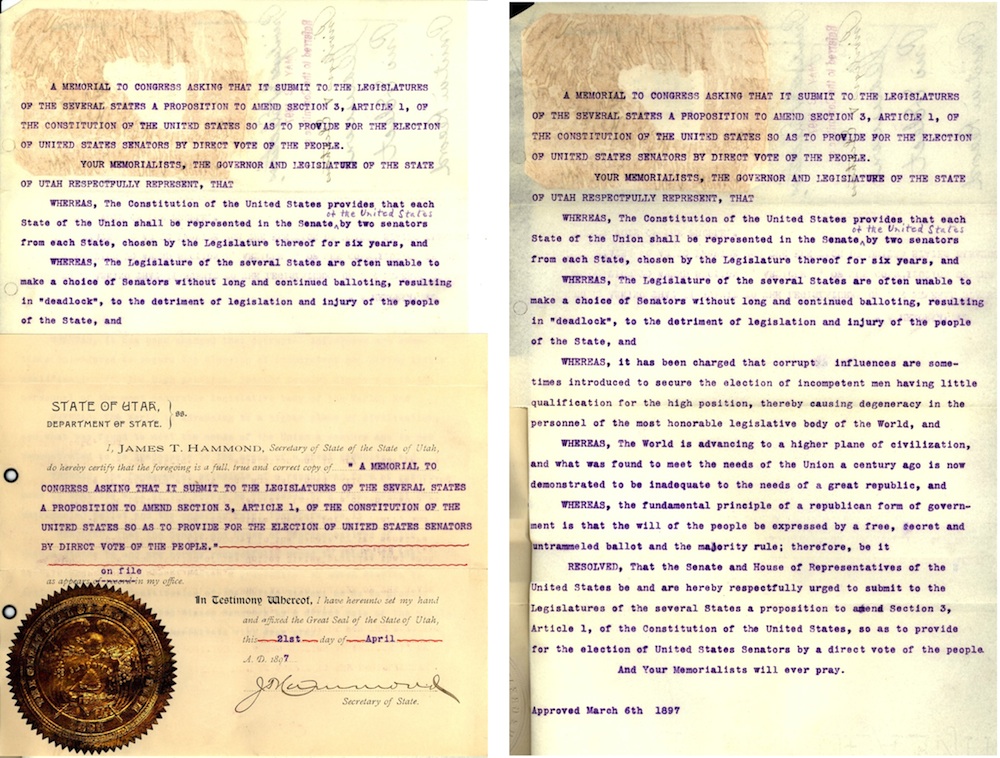
Resolutions of the Utah state legislature in favor of direct election of senators
Re-enter our friend Williams Jennings Bryan, whom we met in last week’s Scopes Monkey Trial newsletter. As a former presidential candidate and leader of the burgeoning Progressive Party, Bryan had kept the popular election of Senators on his wish list for decades. He and fellow Progressives deemed the Senate a “millionaires’ club” that served only private interests. Early attempts at reform adopted the “Oregon System.” Candidates for state legislature endorsed U.S. Senate candidates in their parties’ primaries and were bound to those candidates if elected. This allowed primary voters a chance to have somewhat of a say in who their U.S. Senators would be.
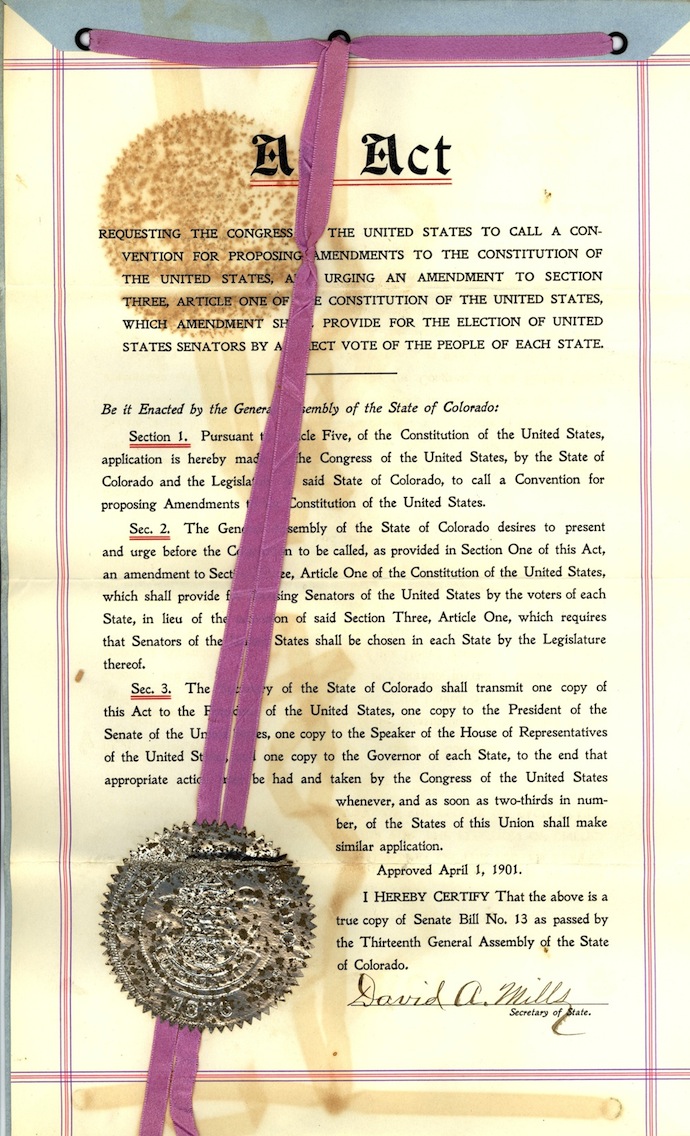
Colorado application for a Constitutional Convention to amend the Constitution for the direct election of senators
Momentum for direct election of Senators started all the way back in 1826, and much of it came from state legislative bodies themselves. From 1893-1908, the House had the two-thirds majority required to move the amendment on, but the resolutions sat neglected in the Senate.
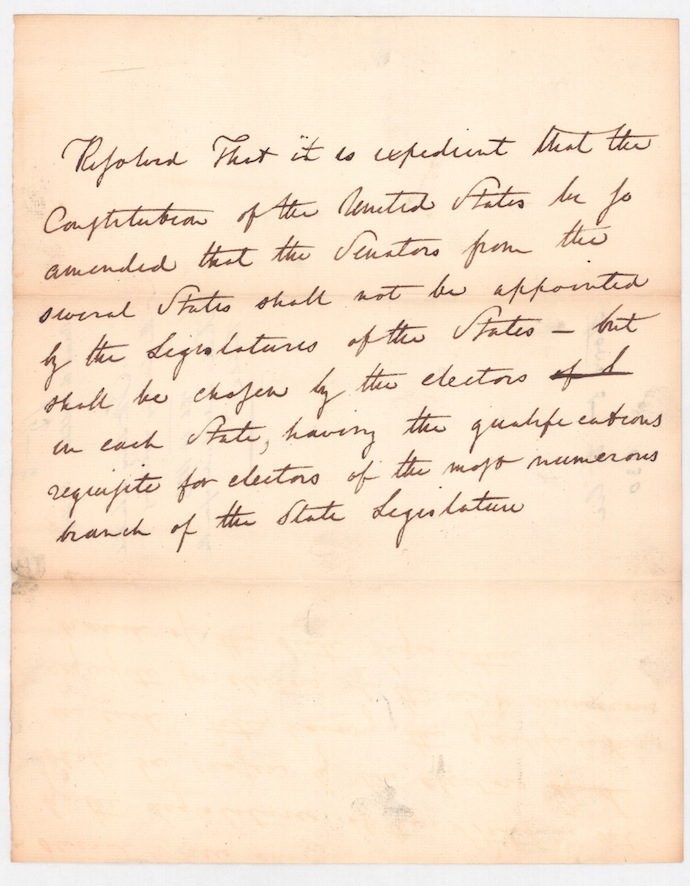
1826 House resolution for the direct election of senators
In the latter half of the 19th century, states began to lose patience with Congress’ inaction. Luckily, there’s more than one way to amend the Constitution. Article V of the Constitution dictates that Congress must call a convention if two-thirds of the states apply for one. States like Colorado and Louisiana exercised this option.
Race and Elections
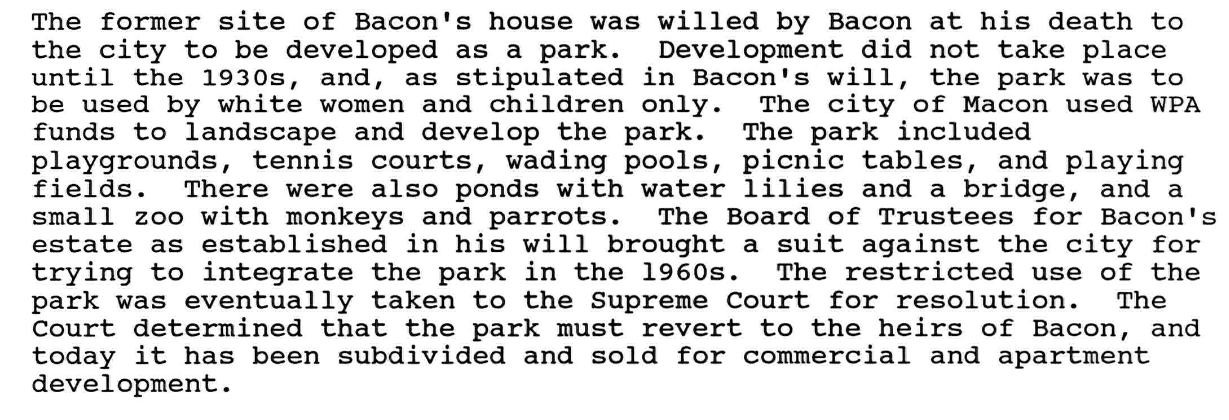
Excerpt from Shirley Hills Historic District application–history of the former site of Bacon’s home
In 1910 and 1911, the House of Representatives again passed resolutions calling for the direct election of Senators. This time, the resolution had a “race rider.” Thanks to the 15th amendment, Black voters had recently gained access to the ballot box. On its face, the proposed language, that “the times, places, and manner of holding elections for Senators shall be as prescribed in each State by the legislature thereof…” did not seem to directly contradict the 15th. But in reality, it would have made it even easier for states to disenfranchise Black voters without fear of federal interference.
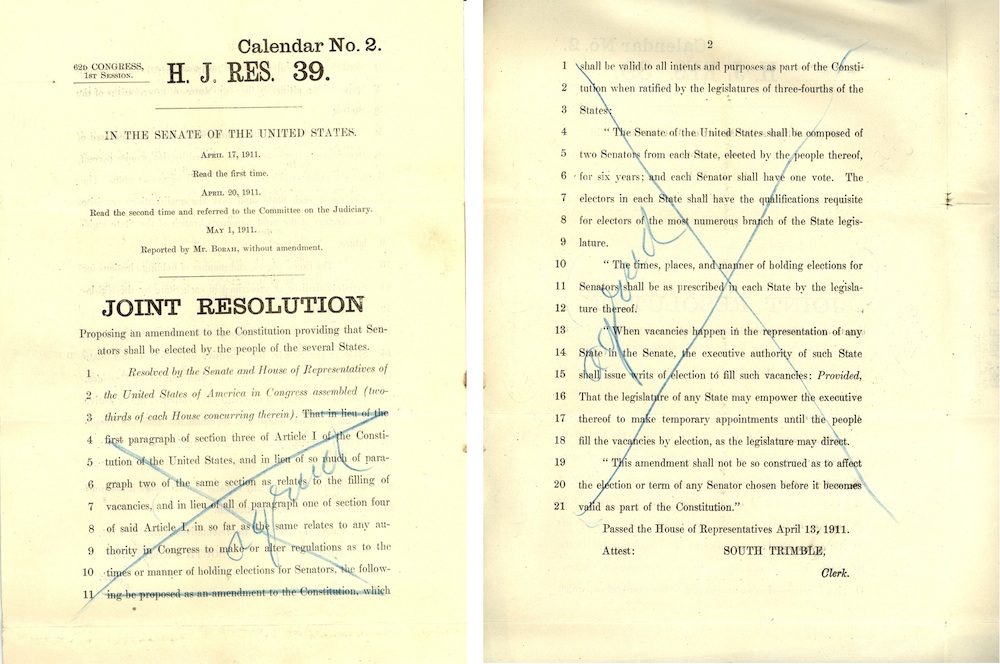
House Joint Resolution 39, which included the race rider on page 2, lines 10-12
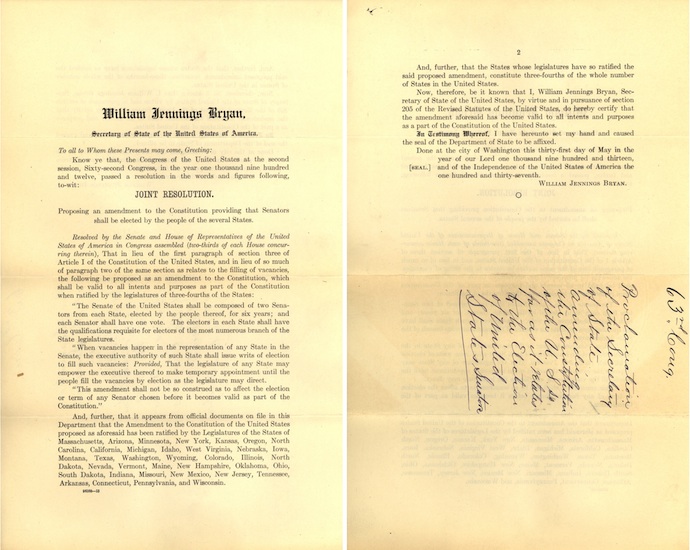
Bryan’s notification on May 31, 1913
This version did not gain much momentum. Senator Joseph L. Bristow of Kansas introduced a competing resolution without a race rider, which the Senate promptly passed. Over a year later, the House agreed to the change, and the resolution was adopted. After ratification from the states, the 17th amendment was adopted on April 8, 1913.
In a personal victory for William Jennings Bryan, he, as then-Secretary of State, got to announce the ratification of the 17th amendment by three-quarters of the states.
“The Senate of the United States shall be composed of two Senators from each State, elected by the people thereof, for six years; and each Senator shall have one vote. The electors in each State shall have the qualifications requisite for electors of the most numerous branch of the State legislatures.
On June 15, 1913, the first direct election of a U.S. Senator under the 17th amendment took place. The people of Georgia re-elected Augustus Octavius Bacon, who had already served three terms in the Senate. Bacon was a member of the Democratic Party, a former Confederate soldier and a self-described segregationist. His will, establishing a “whites only” park in his hometown of Macon, Georgia, prompted two Supreme Court Cases in 1966 and 1970 that clarified that assets held in a public trust could not perform segregationist functions.





